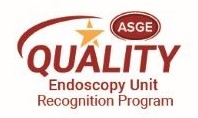
Successful applicants to the ASGE Endoscopy Unit Recognition Program (EURP) submit a summary of a recently conducted quality improvement (QI) project as part of the application process. The QI project in the spotlight this month looked at blood thinner clearance tracking and follow-up.
DEFINE
The surgery center's management and Quality Assurance (QA) Committee noticed a significant disparity in requests for preprocedure blood thinner clearances (BTCs) for patients receiving anticoagulation therapy and responses (if any) from prescribing physicians. This gap would lead to frequent cancellation of procedures, as patients would not be able to be off anticoagulants for an appropriate amount of time or, in some instances, patients would take the initiative and “self-discontinue” critical medications without the recommendation of their physician.
The center relied upon its sister medical practice and scheduling service up to this point to send BTCs to a patient’s prescribing physician with a generous lead time (at least 10 days) to receive a response.
Our goal was to test-drive improvements in BTC tracking and follow-up and patient and physician communication in both the surgery center and scheduling department to reduce the amount of associated procedure cancellations due to not having received a response and the potential risk of delayed care.
MEASURE
The center developed a tool to focus on key elements:
- Patient identifier
- Medication type and procedure type/date
- Whether a BTC was sent and on what date
- Whether there was follow-up on a BTC and whether it required a “resend”
- Whether the patient rescheduled and notes to clarify these elements
Our QA Committee officer would physically record this data (using the tool) for several months (February-May 2021). Any relevant information gathered by our remaining staff and employees of the practice would also be added to the record or tool.
ANALYZE
An obvious shortcoming in the quality of the process was that the center had little knowledge of and involvement with obtaining BTCs.
Historically, efforts to obtain BTCs had been sufficient. Throughout 2020 and 2021, the surgery center and its sister practice were under the stress of operating with reduced staffing structures necessitated by a fractured supply chain, decreased revenue and illness. It was logical to assume these elements might affect response times for other health care practices.
A new electronic health record (EHR) system had also been introduced across both offices and would affect ease of use and familiarity with intraoffice communication, document requests and response tracking.
IMPROVE
The project aimed to close the gap in response times and resolve BTCs by utilizing the available communication tools with the new EHR and to share knowledge and responsibilities of the BTC response and follow-up process between scheduling and the surgery center.
- Surgery center nurses involved in preprocedure interviews would communicate directly with management, scheduling and prescribing physicians to resolve absent BTCs
- Scheduling staff implemented new task setting or “reminder” protocol as a feature in the EHR to follow up with enough lead time to obtain BTCs
- Initiated communication with patients the option to proceed with a procedure (with strict limitations to interventions that may cause bleeding) if a clearance has not been received
CONTROL
Though rescheduling procedures related to BTC requests would persist, there was a significant reduction in outright cancellations due to a lack of response. A refined (more effective) effort to communicate directly with patients and prescribing physicians regarding anticoagulation recommendations was achieved. Surgery center staff could work with and independently of scheduling to obtain blood thinner recommendations directly from physician offices.
A cost benefit can be gleaned from the fact that cancellations and reschedules (pertaining to BTCs) can be resolved more efficiently. More often, scheduling services have adequate time to fill these gaps with another procedure.
Improving intraoffice staff, patient and physician communication can improve a multitude of areas in health care services.
We hope sharing this project summary will be useful to you and your practice. Learn more about gaining honoree status in the
ASGE Endoscopy Unit Recognition Program. EURP honoree units may use the ASGE Quality Star logo in promotion of their units, receive premium educational content bimonthly via an exclusive e-newsletter,
The Huddle, and enjoy a range of additional benefits. Questions should be directed to
eurp@asge.org.